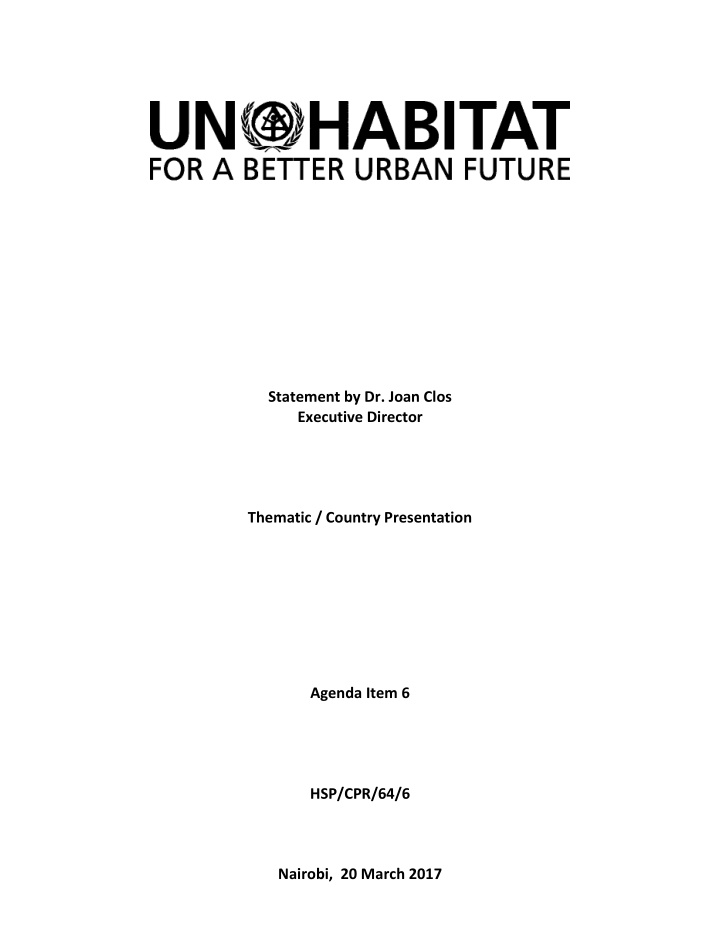



Statement by Dr. Joan Clos Executive Director Thematic / Country Presentation Agenda Item 6 HSP/CPR/64/6 Nairobi, 20 March 2017
Statement by Dr. Joan Clos Executive Director, United Nations Human Settlements Programme (UN-Habitat) and the Undersecretary-General Nairobi – 20 March 2016 Mr. Chairman, Excellencies, Distinguished Members of the CPR, I want to share with you the UN-Habitat work in Syria. Syria is arguably the most complex and dynamic humanitarian crisis in the world today. According to the Office for the Coordination of Humanitarian Affairs, the six years of conflict has claimed some 250,000 lives and approximately one million Syrians have been injured. UNHCR reports that 4.8 million Syrians have been forced to leave the country, and some 6.5 million are internally displaced. This makes Syria the largest displacement crisis in the world. The recently approved 2017 Humanitarian Response Plan for Syria identifies 13.5 million people in need of humanitarian assistance. This includes 11.5 million in need of health care; 12.1 million requiring water and sanitation support; some 2.5 million are food insecure; and more than 1.5 million in need of secure shelter. Syria has reportedly lost some four decades of development gains. Syria has also seen major reversals in all 12 Millennium Development Goal indicators. The Syrian economy has contracted by an estimated 40 per cent since 2011. Four out of five Syrians now live in poverty. School attendance has dropped by over 50 per cent. Excellencies There is clear urban dimension to these figures. Prior to the crisis, Syria’s population was 53 percent urban; today, the figure is closer to 70 percent. Two out of every three Syrians in Syria today live in cities. This makes
Syria, sadly, one of the largest examples of crisis-induced urbanisation in the world today. People are going to cities not simply in search of greater safety and security, but also because cities are where they can find food and water, access health and education services, and find jobs in order to look after their children and families. Distinguished Members of the CPR Responding to urban humanitarian crises presents a very different challenge from working in rural areas. The classic sectoral approach to humanitarian response simply does not work in cities. Specialist spatial planning capacity is required in order to help traditional humanitarian actors make difficult choices and trade-offs in a context of finite resources and seemingly infinite need. Coordination cannot be done simply through humanitarian sectors, but must also involve local authorities – even in a context as politically challenging as Syria. The response itself must focus on rehabilitating urban infrastructure and services. While the cost of such interventions may seem high to donors, beneficiaries are reached in a much more cost-effective – and equitable – manner, than through traditional household approaches. Excellencies UN-Habitat has been working in Syria since 2013, specifically in the areas of shelter rehabilitation, land and property issues, water supply, sanitation, solid waste, and community infrastructure. UN-Habitat's approach is based on a rapid urban planning process developed specifically for the crisis context, working with local authorities, UN agencies and NGOs. I am pleased to introduce some of UN-Habitat ’s Syria staff to present an update on our work in Syria and outline emerging priorities for the future. Thank you for your attention.
Recommend
More recommend